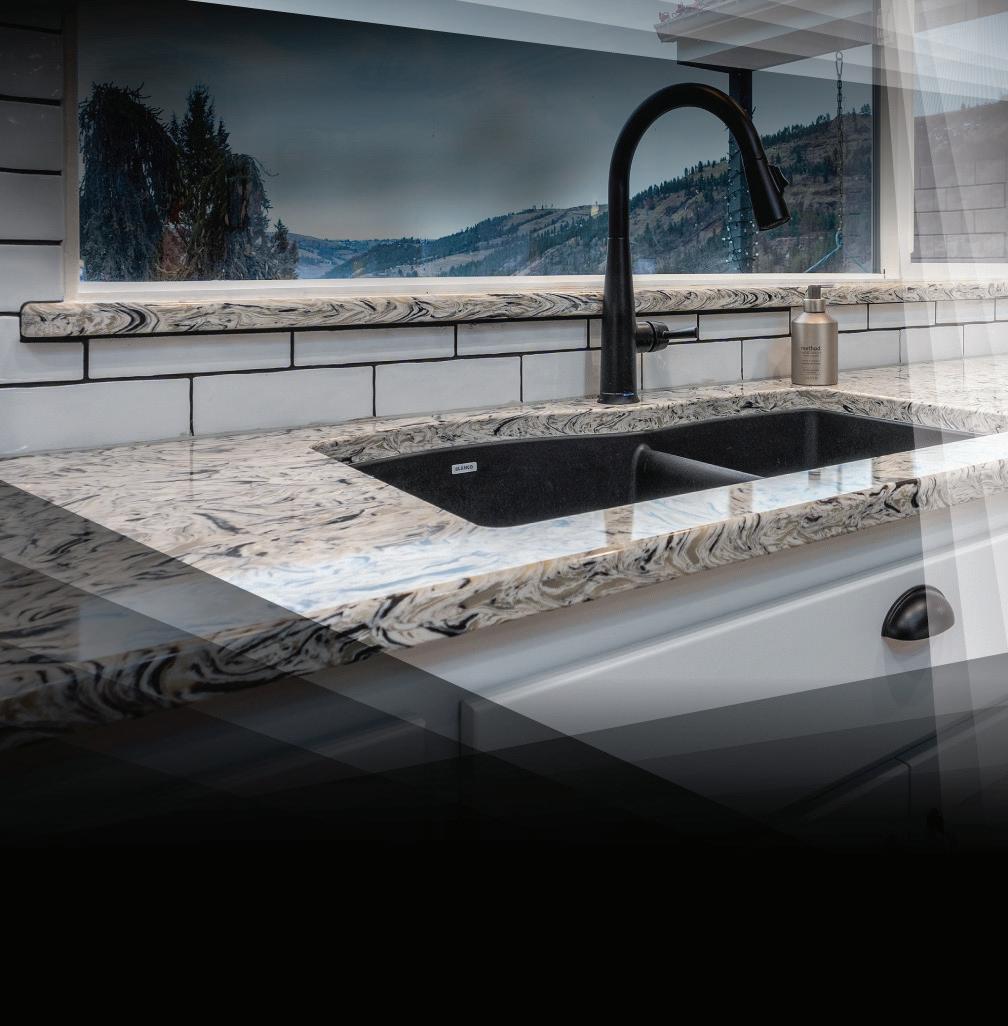

Pros and Cons of Mortgage Buy-Downs
By Kathleen Willcox realtor.comToughfinancialtimescallforcreative financing. Historically high mortgage rates and a cooling housing market have caused buyers and sellers to look for novel ways to stretch their dollar and seal a deal.
Buyers, scared by lofty mortgage rates that threaten to add hundreds of dollars to their monthly housing bill, are seeking out mortgage buy-downs as a way to trim some of that excess. Sellers, desperate to unload homes, are often willing to help out.
Simply put, a mortgage rate buydown is upfront money, often paid by the home seller (builders and lenders can also front the cost), to “buy down” the interest rate on the buyer’s loan for aperiodoftime.Thistemporarilyeases a buyer’s mortgage woes.
But just how practical are mortgage buy-downs for homebuyers?
We reached out to real estate experts for insight into the benefits and drawbacks of a mortgage buy-down. Here’s what they had to say.
Pro: Lower monthly bills
There are different types of buydowns, but all of them lower your interest rate.
“While these funds are temporary, theyimmediatelylowerbuyers’monthly payments, making homeownership
moreaffordableintheshortterm,”says
Shri Ganeshram, who works with real estate investors on financing as CEO of Awning.com in San Francisco.
Con: When the buy-down expires, regular payments may come as a shock
One of the biggest downsides of a buy-downisthatit’stemporary.Abuydown will offer homebuyers a lower monthly mortgage payment for a set period of time, typically one to three years. But once the buy-down expires, your bills could become a lot heftier.
“When the initial buy-down period ends, your interest rate may reset to a higher rate than before,” says Shaun Martin, owner and CEO of We Buy Houses in Denver.
If this does happen, it may defeat the purpose of the buy-down and potentially lead to more costly payments down the line. It’s a risk that buyers have to consider and should discuss with their lender.
Pro: They can provide cash flow for repairs or furniture
Aseveryhomeownerknows,moving into a new home—no matter how perfect it might seem initially, and no matter how many furnishings you already have on hand—often entails a seriesofunexpectedfixesandfurniture buys. The break you’ll get on your
mortgage bill courtesy of a buy-down can leave you with some cash on hand.

“Buy-downs can be especially valuable for investors or owners who need to make repairs to the home or furnish it,” Ganeshram points out.
Con: Not all lenders offer buy-downs, and terms vary
Buy-downs are not offered universally, and when they are offered, one lender’s terms might differ considerably from another’s in the same region.
“Not all lenders will offer mortgage buy-downs, so you may need to shop around,” Martin says. “Additionally, the terms of buy-downs can vary from lender to lender, so it is important to doyourresearchand find one that best meets your needs.”
Weighing the pros and cons
Whether or not a buy-down is right for you might also depend on your timeline and how long you plan to live
in the home.
“If you’re planning on selling your home in a few years, a buy-down is a smart move,” says Emmanuel Guignard, senior mortgage broker and director of Loanscope. “But if you don’t have a steady income and are planning on living in the house long term, you may struggle to make the repayments.”
When making this momentous decision, it’s important to consult professionals.
“My advice is to consult a mortgage professional and understand the terms and conditions of the buydown, including the buy-down period, the increase in payments after the period, and the costs associated with the buy-down before making a decision,”Ganeshramsays.“Askthem to do a calculation of how much you would save on the monthly payment in total versus how much they are asking you to commit upfront.”












Standard Features vs. Upgrades in a New-Construction Home
 By Kimberly Dawn Neumann realtor.com
By Kimberly Dawn Neumann realtor.com
One of the reasons many homebuyers are drawn to buying a brand-new home is that they often get to choose many of the home’s features to suit their tastes. With a resale home, you pretty much get the place as is. But with new construction, you can call the shots on countertops, fixtures, flooring, paint colors, andsomuchmoretomakeyourhomefeellike, well, you!

However, prospective new-construction customers should realize that certain builders may offer a wide array of options, whereas othersmayofferfewtonone.Or,somemayoffer changes,whichtheychargeextrafor.
“Whenshoppingforabuilder,itisimportant to understand what is included in the base price for the plan you like—or you could end up spending thousands more to add the options and features you want,” says Kimberly Mackey,founderofNewHomesSolutionsand a sales and marketing management firm in residential homebuilding.


In other words, it’s important for anyone shopping new-construction homes to have
an understanding of what is standard and what will likely require an upgrade (meaning more money out of your pocket). Here’s how to know the difference, and what’s worth the additional investment.
What comes standard in a new-construction home?
In the new-construction business, “standard” is a relative term, since what is included in the base price will depend on who’s building the house.
“What is standard and what should be standard will always be subjective and based on the builder’s price points in the market,” says Don Turner, national director of sales for new construction at Realtor.com. However, with risingmortgageratesandhousingcostsnibbling away at what buyers can afford, builders will need to provide more to lure buyers away from resale homes that have everything in them and canquiteoftencometurnkey,addsTurner.
Construction
Continued on page 6
Simple tips to improve your status with mortgage lenders

Owning a home is a dream shared by millions of people. Investing in property that can be owned within 15 to 30 years of closing on the home makes more financial sense to many than continuing to rent and having little to show for it over time.
The first step to take when planning to enter the real estate market is to ensure that your finances are in order. Various factors will influence individuals’ ability to secure a mortgage, and these are some ways to make yourself more attractive to prospective lenders.
Check your credit report
Lenderswillcheckyourcreditreport before deciding if you are a risk or a safe bet for a mortgage. So it makes sensetocheckyourcreditreportprior to speaking with a lender. The Federal Trade Commission says everyone can get one free credit report a year from each of the three credit reporting bureaus. If you split it up, you can get a credit report every four months so you are aware of anything that may adversely affect your ability to get a mortgage loan. A credit (FICO) score that’s too low may disqualify you from a mortgage. Each lender sets its own thresholds when they price and approve loans, but the higher your credit score, the better.
Improve credit standing
One way to improve your status in the eyes of lenders is to pay down
credit card balances to reduce your credit utilization ratio. A high utilizationoccurswhenthereisahigh balance in relation to the credit limit, says Business Insider. Also, it may be wise to avoid any credit inquiries through new credit card applications for several months before applying for a loan, as these inquiries can affect your score.
Be realistic about what you can afford
Do your homework and determine your target interest rate and monthly payment as well as what down payment you can afford. It will help you research potential lenders and provide an idea of what may be offered to you.
Pay bills on time
Payingbillspromptlynotonlyhelps youavoidlatefees,butalsopositively affects your credit. The financial resource The Mortgage Reports urges diligence when paying rent, as late rent payments can bar you from getting a mortgage. Lenders look at rent history as the biggest indicator of whether you’ll make mortgage payments on time.
These are some of the ways to make a prospective home buyer look better in the eyes of mortgage lenders. Individuals can speak with financial professionals about what else they can do to improve the possibility of securing mortgages at the best rates possible.

Construction
Continued from page 4
“What we are more commonly seeing now, especially with rates being higher, are builders increasing their level of standard features to include all appliances, even washers and dryers,” says Turner. And as long as home prices remain high, this trend is bound to stick around and can help seal the deal for cash-strapped buyers who have little money left after moving in.
However, homebuyers who just assume that items like appliances would automatically be part of the sale could be in for a rude awakening when they’re not. That’s why it’s vitally important to ask builders exactly what is included in the baseline price.
How to find out what a builder includes as standard
“New-home shoppers should always ask for the standard features sheet as well as the list of possible upgrades,” says Erica Bell, marketing manager for the homebuilding company Miller & Smith.
Mackey also suggests that new-construction buyers use the standard features sheet while
touring model or spec homes to differentiate what designer upgrades they may have. This will keep potential homebuyers from assuming what they see in a model home is exactly what they’ll get (and being disappointed or surprised if they must pay more to make their home look like the model they toured).
What is considered an upgrade?
That being said, Turner suggests examples of upgrades might include the following:
• Quartz countertops instead of granite or Formica
• Bigger kitchen cabinets
• Stainless-steel appliances
• Hardwood flooring or tile versus carpet throughout the home


• Double-door entrances or a three-car garage
• Dual vanity sinks and/or separate tubs and showers in the bathroom
Basically, anything that isn’t included on a builder’s standard features sheet will be charged as an upgrade, which can definitely affect the final price of a new-construction home.
What are the best newconstruction upgrades to get?

Personal preferences aside, if you don’t have unlimited funds, what are the smartest upgrades to make that will increase the value of your newconstruction home?

“My belief and guidance to buyers is they should keep standard lighting and standard plumbing fixtures as those are easily switched out aftermarket,” says Bell. “However, it is totally worth it to upgrade materials in your kitchens and bathrooms.”
Many experts agree that the biggest bang for your buck will probably come from upgrades to the flooring, kitchens, and bathrooms.
“Generally speaking, kitchen upgrades are going to give you the best ROI of all the options,” says Bill Samuel, owner of Blue Ladder Development. He adds that his favorite upgrade is a separate top cabinet with a glass front and interior lighting.
“If you pay attention to the fine details when designing your kitchen and do the upgrades in the right places, you’ll wind up with a very highend-looking home,” says Samuel.
Finally, you might also want to add structural
options that will increase square footage and maximize living space.
“When you create your budget, focus first on the structural options, like bonus rooms or extra bedrooms, garage extensions, morning rooms, etc., because those are the things that are more expensive to go back and do later,” says Mackey. “Even if the builder offers the space unfinished, you will want to include that space to give you room to grow down the road.”
Which new-construction upgrades might not be worth the money?
Basically, any features that are not firmly attached to the structure of your house are fine to keep standard for now if you’re looking to save money. This includes most appliances, lighting, and basically anything that can be easily swapped out later.
“My belief and guidance to buyers is they should keep standard lighting and standard plumbing fixtures as those are easily switched out aftermarket,” says Bell. “However, it is totally worth it to upgrade materials in your kitchens and bathrooms.”
How Much Is My House Worth? Tools to Help You Determine Your Sale Price
By Julie Ryan Evans realtor.comMaybe you’ve been inspired by those “Sold” signs in your neighborhood; maybe you’re just ready for a change of scenery. Whateverthecase,agreatwaytogetanidea of how much your home is worth is to look at the recent sale prices of other homes in yourneighborhood.
Comps can help you figure it out
By identifying the sale prices of similar properties in your area, known as “comparables” (or comps), you can come upwitharealisticaskingprice.Whenusing comps, you’ll want to compare apples to apples—that is, homes that have a similar square footage and amenities as yours. You also want to look at homes that were sold withinthesamesix-monthperiodandthat are similar in style.
“Itrytofindpropertieswithin150square feet either side of the subject property with similarfeatures,”saysRickSnow,aRealtor® with Exit West Realty in El Paso, TX.
“The number of bedrooms doesn’t really matter because they are all figured into the square footage, but baths—half, threequarter, or full—give more value,” he says. “For example, a three-bedroom, two-bath home that is 1,800 square feet would come out the same as a four-bedroom, two-bath home that’s 1,800 square feet; but a threebedroom, two-and-a-half-bath would be worth more.
How to search for comps
A good place to start your research is realtor.com®’s Just Sold feature. Just enter your ZIP code, and click “Search.” A list of recently sold homes in your area will pop up, along with their sale price. This will give you a general idea
of the home prices in your area, but to really home in on a sensible price for your home, you should call on a real estate agent.
“Agents can discuss pricing of other sales or pending sales in your area with other agents to help you estimate home values,” says Michele Lerner, author of “Homebuying: Tough Times, First Time, Any Time.” “A [real estate agent] can also provide you with a free comparable market analysis to help you decide if you want to sell your home.”
And while it’s a great idea to find out about recent home sales in your community, you also should recognize your home might not sell for a similar price.
Ingeneral,therealestatemarketchanges rapidly,andtimingisalargefactorinasale price. Many of the factors of the larger market are out of your hands: Mortgage rates, the local economy, the national economy, consumer confidence, and
the availability of homes for sale all influence a final price.

Will home improvements affect your sale price?
If you look through similar listings and feel like your house isn’t up to snuff, you might think about remodeling before putting your home on the market. But before you hire a contractor, determine if the cost of a remodel will be worth the value it will add to your property.
Snow says homeowners often believe theycanrecapturemoneythatisspenton improvements dollar for dollar, but that just isn’t the case.
“Many improvements add marketability but not additional value,” he says. “Even projects that add value typically don’t bring back a dollar-fordollar return on investment.”
Homeowners might also make improvements that are too specific to
their personal taste and won’t appeal to a wide variety of buyers.
“When I am looking at the house, in my mind I’m thinking how much it will cost me to get rid of this or that. Many buyers then base their offer on value minus ‘what it’s going to cost me to make it the way I want it,’” says Snow.
If you are going to make some improvements with the hopes of increasing your home’s value, just be careful not to do too much remodeling.
“Be sure to consider the potential negativeconsequencesof‘overimproving’ your home for the neighborhood,”Lerner says. “It could be harder to sell your home in the future if it’s much larger or more expensive than the surrounding homes.”
Remember, buyers weigh many factors when they decide to buy a house, and digging deep into your home’s value can help you get the best price.














































